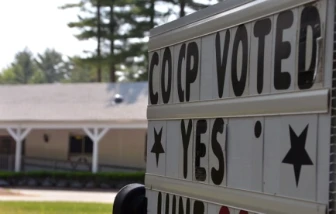 There are two basic options when homeowners come together to buy their community as a co-op: Market-rate and limited-equity co-ops.
There are two basic options when homeowners come together to buy their community as a co-op: Market-rate and limited-equity co-ops.
The basic structure – where homeowners buy a membership interest (a “share”) and operate the resident corporation on the 1 Household/1 Member/1 Vote rule – is the same in both market-rate and limited equity co-ops.
The big difference between the two is the price of the membership. Not surprisingly, that basic difference creates more differences.
In a market-rate co-op, memberships are priced at the level that equates to a 25 percent down-payment on the purchase of the community plus closing costs. For example,
MHC Price $1,000,000
Down-payment 25%
Cash down-payment $250,000
Closing Costs $100,000
Cash needed to buy $350,000
# of Members 25
Membership Cost (each) $14,000
The cost of membership is simply the cash needed to buy the community divided by the number of people who can and are interested in buying in.
All of that cash – which is equity to the co-op – is used to entice a bank to lend the co-op the other 75% of the price (75% loan to value) it needs.
The two major advantages to this model:
1. There are generally several financing sources for the 75% LTV first mortgage; and,
2. The members can vote to sell the MHC in the future. If that’s done at a profit, the members split the profit among themselves. Non-members receive no benefit from the land sale. Moreover, if the sale results in a land use change and the buyer closes the community (say, to put up a hotel), the non-members are evicted without a share of the profits. (It’s happened in Florida.)
There are 4 basic challenges in this model:
1. Fewer members results in higher membership costs. In this example, if instead of 25 Members, only 17 joined (or could afford to join), the price per share would rise to $20,588. With only 10 Members, the share price would be $35,000. This slows the up-front process of organizing the co-op and limits membership to those with the financial capacity to fund such a purchase;
2. While the co-op’s commercial mortgage can be reasonably easy to find in markets with this model already operating, share loans are less common. A share loan would help more people buy in to the market-rate co-op. They’re just hard to find. There’s an individual in California who has done them. In Florida, where there are a lot of these types of co-ops, banks do make share loans;
3. The large share prices tend to make Membership an exclusive club of “co-op owners” while a large number of non-members remain “tenants”. In watching these over the years, this member/non-member split remains steady over time and it can get heated when rent increases are passed by the “owners” to the “tenants” alone; and,
4. Large share values have limited home lenders from lending in market-rate co-ops outside of Florida because the share creates a concern over securing the home and lot in a repossession action by a lender.
Limited equity co-ops start with a different basic formula and a different medium-term goal: Eventual 100% membership and alignment of ownership interests among the community.
Based on the same numbers, a limited-equity co-op looks like this:
MHC Price $1,000,000
Closing Costs $100,000
Financing needed to buy $1,100,000
# of Members 25
Share Price (each) $100 – 1,000 set by co-op, and generally only $50 by closing
In a limited-equity co-op (LEC), financing is arranged to cover virtually all of the costs so that membership interests can be set at a low amount and therefore be affordable to all homeowners. By-laws require that homebuyers new to the community will become members, so in fact LEC does get to 100% membership through existing and new homeowners. The Prairie Lake Estates Co-op in Kenosha, Wisconsin, had 100% membership at the time of their purchase. That’s not the norm, it’s the ideal!
The major advantages of a LEC are:
1. They’re quick to organize, which allows the homeowners to respond to a limited opportunity to purchase from the commercial owner since there’s no need to arrange large individual investments or share loans (plus there’s no risk of the share price rising if people don’t qualify for a share loan);
2. Neighborhoods reach 100% membership and achieve aligned ownership where every homeowner also is a member;
3. The limited-equity nature of these co-ops – share prices don’t rise and the park can’t be sold at a profit – means public resources are more readily available for infrastructure improvements. (It’s not guaranteed, we need to work with public agencies and win support, but there is precedence in other states for LECs being eligible.)
4. Home lenders have an easier time lending in LECs because there’s not a large share that complicates taking title. (How do you repossess the home and not the share when as the lender you want to keep that home on the lot? It’s feasible, but it scares them off. (They’re a skittish bunch.)
Challenges include:
1. Not really a challenge but the “quid pro quo” for using nonprofit resources to secure specialized financing that covers all or most of what you need to purchase a community is that the community can’t be resold for a windfall profit. The technical IRS reason for this is that nonprofit resources can’t be used to create windfall profits for people. (ROC USA is a tax-exempt nonprofit organization.)
2. Only non-profits and state agencies are in the business of providing the specialized resources to finance co-op purchases for the price of the community plus closing costs. (There is private capital that would do it but the price would be 16% or more for it.)
3. As Colleen Preston (Cranberry Village Resident Association and ROC Association) said, “It sounds too good to be true.” It can sound like a scam, like predatory lending. I assure you that our intent and purpose is fully what we say it is. We are who we say we are, no bull.
So, there you have it. We practice limited equity co-ops because it works well for low- and moderate-income communities and it fulfills our commitment to democratic community development where every homeowner has a reasonable and affordable opportunity to join, participate, vote and run for office.
We got lucky when we figured out the model worked better for lenders who finance homes – that wasn’t on our minds in the 1980s when the roots of this LEC model were packed.
Have questions? Please ask.
